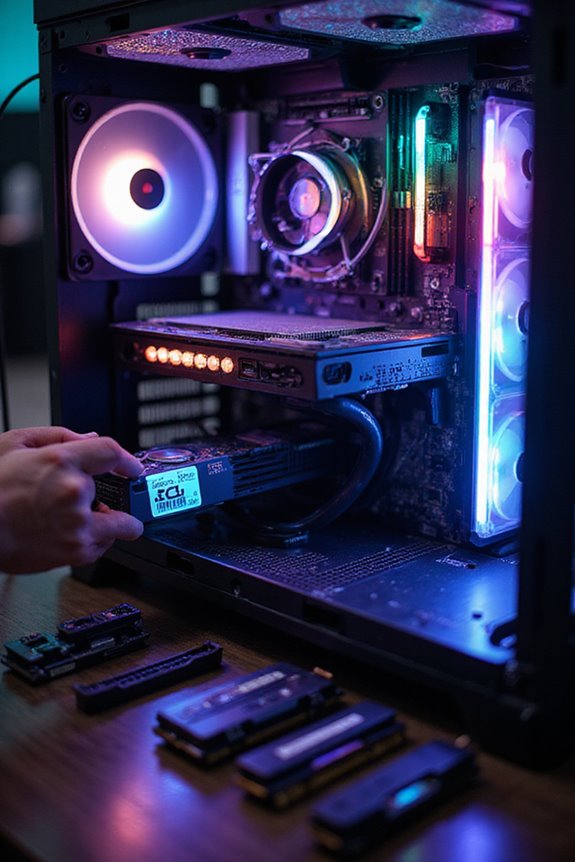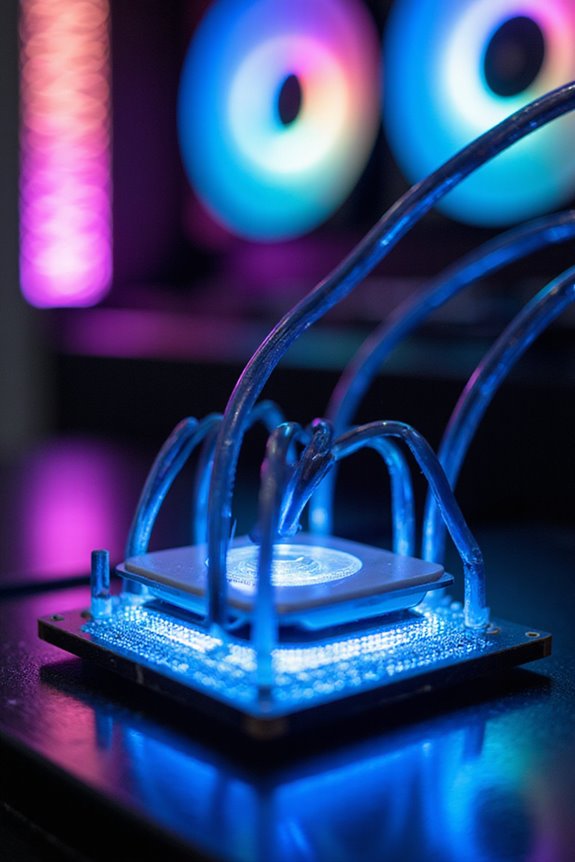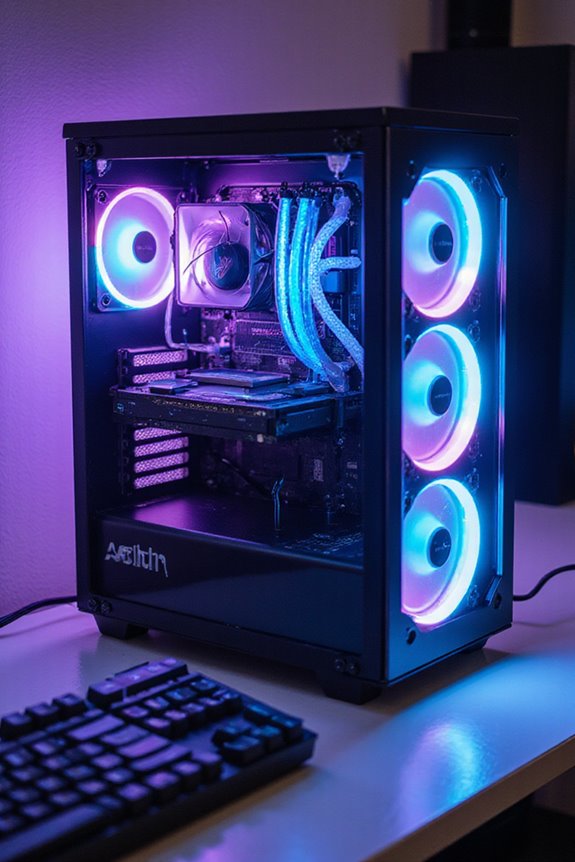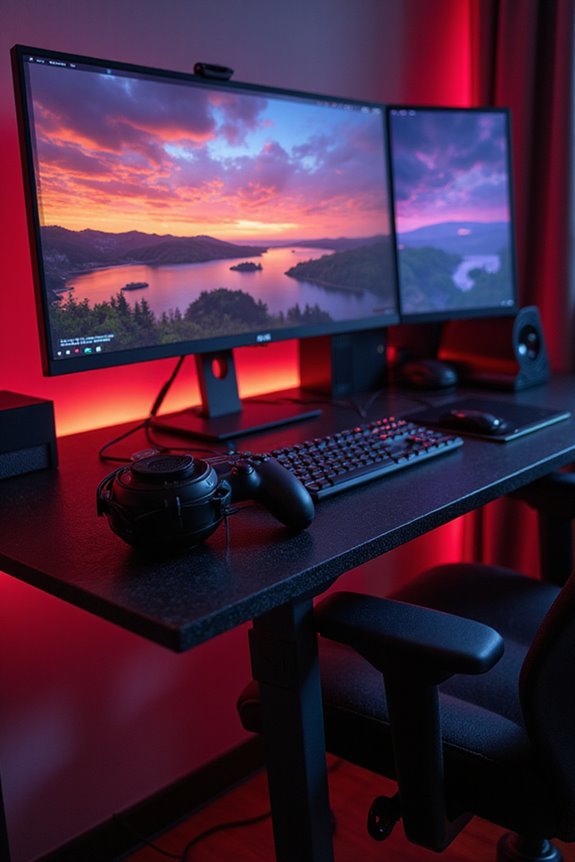Building your dream gaming PC is all about choosing the right components for performance. Start with a CPU like the AMD Ryzen 7600, paired with 32GB of RAM and an NVMe SSD, such as the Samsung 990 Pro, for speed. Don’t overlook a solid power supply with at least 80 PLUS Gold certification. I recommend a mid-tower case for good airflow and cable management. Stick around, and you’ll discover more tips to enhance your setup for today’s demanding games.
Key Takeaways
- Choose a powerful CPU like the AMD Ryzen 7600 for optimal gaming performance and integrated cooling capabilities.
- Select a compatible motherboard with an ATX size to support future upgrades and expansions.
- Aim for 32GB of RAM to ensure smooth gameplay across the latest titles.
- Invest in a high-speed NVMe SSD, like the Samsung 990 Pro, for quick load times and responsiveness.
- Prioritize a reliable power supply with at least 80 PLUS Gold certification for efficiency and stability.
Essential Components for a Dream Gaming PC
When it comes to building your dream gaming PC, selecting the right components is essential, especially if you want a system that can handle the latest games. Start with the CPU; I recommend at least six to eight cores, like AMD’s Ryzen 7600, which offers great performance and integrated cooling for budget builds. Next up is the motherboard—make sure it’s compatible with your CPU socket type, like AM5 for AMD, and consider an ATX size for more expansion options. Don’t skimp on RAM either; 32GB is the sweet spot for smooth gameplay. Finally, opt for NVMe SSDs with at least 1TB capacity. They’re pricier, but the speed is worth it, ensuring your games load quickly and run smoothly.
Choosing the Right Power Supply

Choosing the right power supply unit (PSU) is essential for your gaming PC’s performance and longevity. First, calculate your total system power, factoring in your CPU, GPU, RAM, and other components. It’s wise to add a 10-20% wattage margin for future upgrades and unexpected spikes. Look for a PSU with at least an 80 PLUS Gold certification; it’ll save you money on energy bills and reduce heat output.
Don’t forget about connectors—make certain your PSU has the right ones for your motherboard, CPU, and GPU. Finally, consider the form factor to guarantee a snug fit in your case. A reliable PSU is an investment in your gaming experience, so choose wisely!
Case and Cooling Considerations
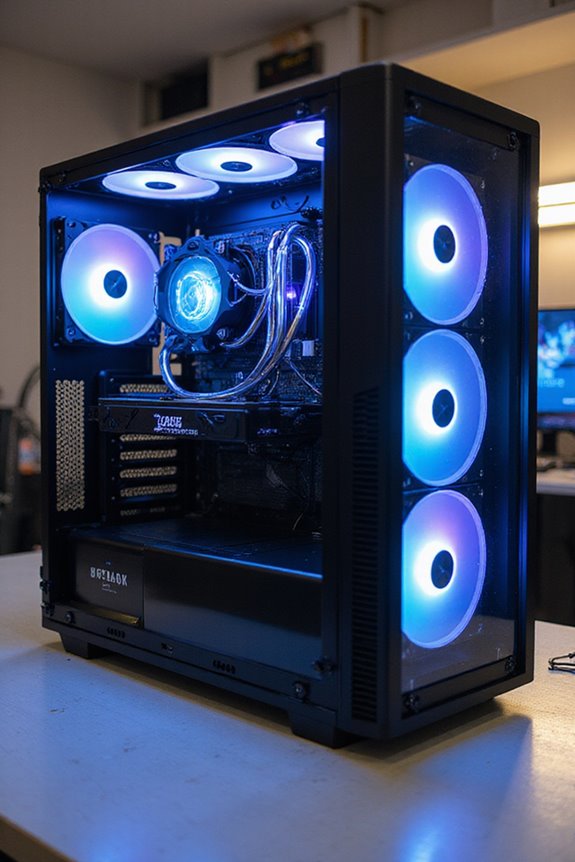
A well-designed case can be the foundation for your dream gaming PC, impacting everything from airflow to aesthetics. I often prefer mid-tower cases for their balance, supporting larger ATX motherboards while keeping things manageable. If you’re going all out, a full-tower case can accommodate E-ATX boards and extensive components, but they take up more space.
Cooling is just as essential; air cooling is budget-friendly, while liquid cooling offers quieter performance. I love cases with modular designs, making upgrades easier. Don’t overlook cable management—hidden cables not only improve airflow but also keep things tidy. Finally, consider materials like tempered glass for that sleek look, and RGB lighting to give your setup a personal touch. Happy building!
High-Performance Storage Options
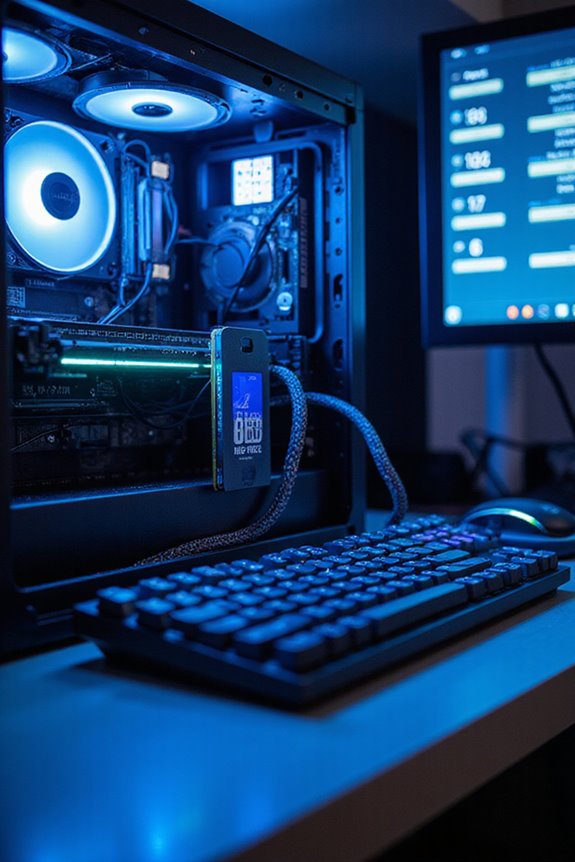
Upgrading your gaming PC doesn’t just stop at the case and cooling; high-performance storage is where the magic happens. Choosing an SSD like the Samsung 990 Pro with PCIe 4.0 can drastically reduce load times and enhance responsiveness. The WD Black SN850X, with its heatsink compatibility, is perfect for those long gaming sessions. For reliability, the SK Hynix P41 Platinum features DRAM, ensuring you won’t lose progress during intense gameplay. If you’re looking for something compact, the Silicon Power XS70 offers impressive speeds in a small package. Remember, investing in quality storage not only improves your current setup but also future-proofs your system for upcoming titles. Fast storage makes all the difference—trust me, you’ll feel it.
Networking and Connectivity
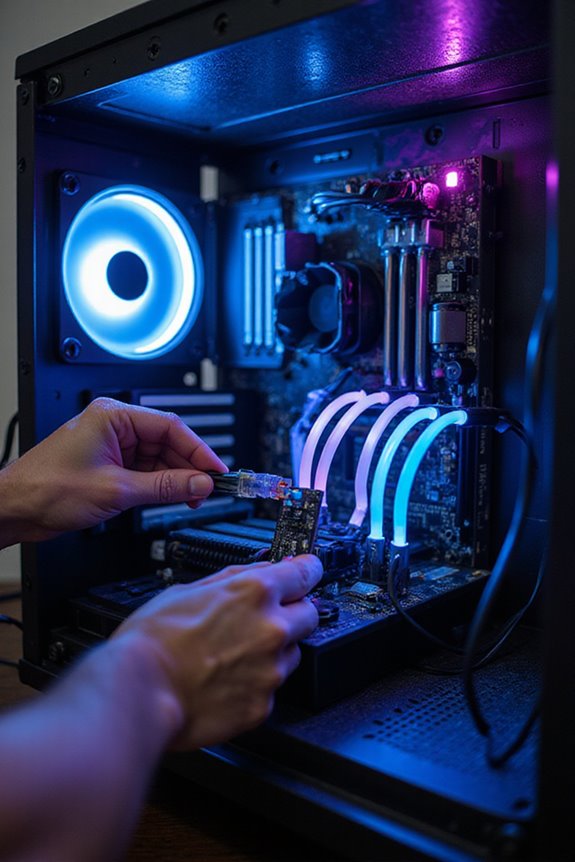
When it comes to building your dream gaming PC, having a solid networking and connectivity setup is essential. I personally recommend going for a wired Ethernet connection, as it offers low latency and a stable experience. Look for motherboards with 10Gb Ethernet support if you’re serious about competitive gaming. RJ45 jacks are your best friends here.
However, if you prefer wireless, modern Wi-Fi 6 or 7 can provide fast speeds and good coverage. Just be mindful of router placement to minimize interference. Plus, consider advanced settings like Quality of Service (QoS) to prioritize gaming traffic. Whatever you choose, make sure your cable management is on point to keep airflow efficient. Trust me, it makes a difference!
Budgeting and Pricing Strategies
Budgeting for your dream gaming PC can feel overwhelming, especially with a wide range of options and price points. You can build a solid rig for as little as $500, or go all out for $4,000+. I’ve found that mid-range builds around $1,500 hit the sweet spot for 1440p gaming.
When budgeting, your GPU choice is essential; something like the AMD Radeon RX 7600 XT balances performance and cost well. Don’t forget about the CPU, where options like the Intel Core i5-14600KF shine. Allocate your budget wisely across components to maximize performance without overspending. Keep an eye out for sales, and remember, a well-planned budget can lead to the gaming experience you’ve always wanted.
Frequently Asked Questions
How Do I Choose the Right Monitor for Gaming?
When I think about choosing the right gaming monitor, I picture a battlefield—crystal-clear visuals and lightning-fast response times. I’d balance resolution, refresh rates, and my budget to create that immersive experience I crave.
What Peripherals Should I Buy for an Optimal Gaming Experience?
When it comes to peripherals, I’d recommend investing in a high-quality gaming monitor, a comfortable headset, and a responsive keyboard and mouse. These essentials really elevate my gaming experience and make it more immersive and enjoyable.
How Often Should I Upgrade My Gaming PC Components?
Did you know CPUs can last 5-10 years? I usually upgrade when performance dips or I can’t play new games. It’s all about balancing my budget with what I truly need for gaming.
Can I Use My Gaming PC for Tasks Other Than Gaming?
I’ve found my gaming PC’s performance perfect for video editing and 3D modeling too. It’s versatile enough for all kinds of tasks, making it a smart investment beyond just gaming. You’ll love its capabilities!
What Should I Consider When Selecting a Gaming Chair?
When selecting a gaming chair, I always consider comfort, adjustability, and durability. A good chair supports my posture and matches my style. Plus, I look for quality materials and a solid warranty for peace of mind.

